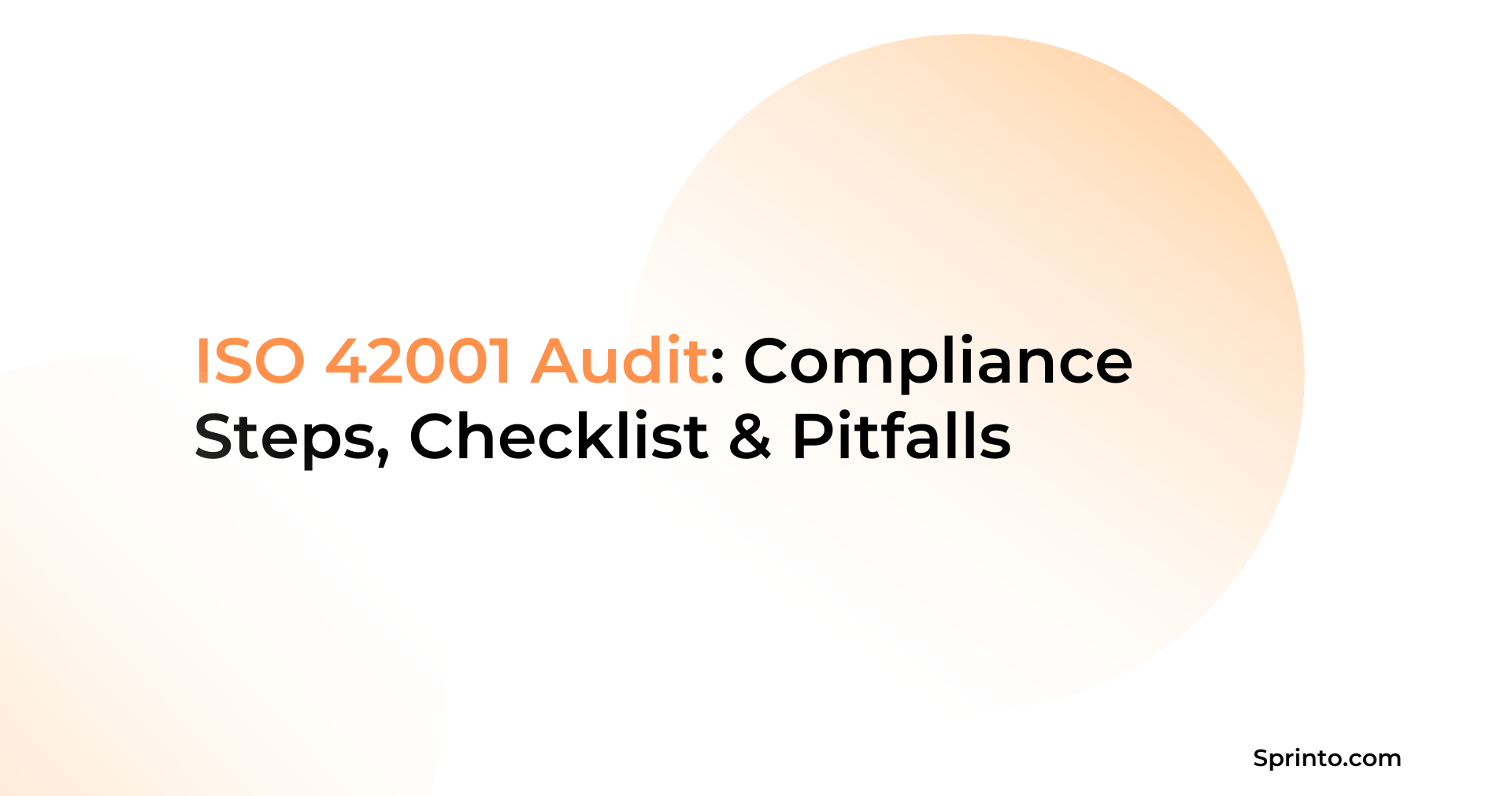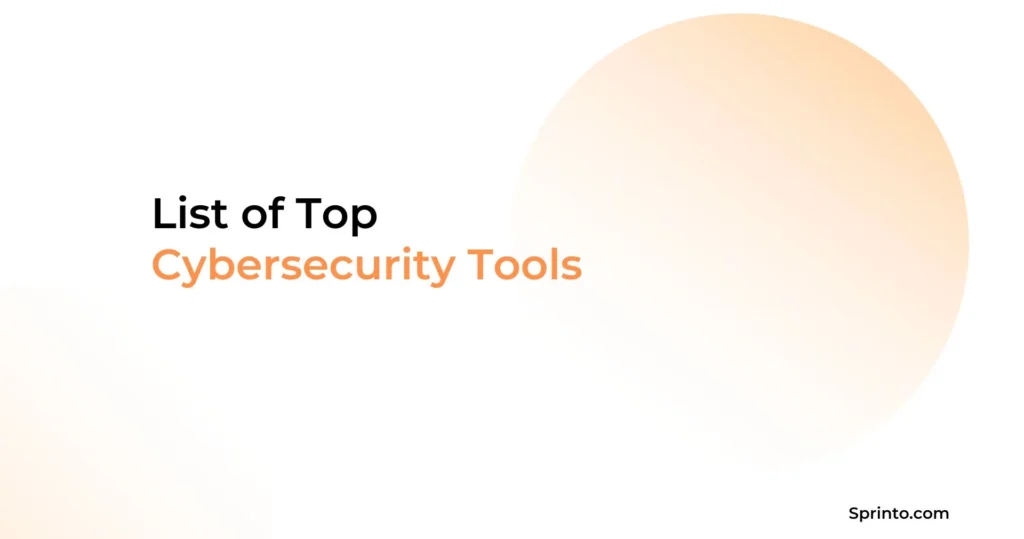
AI is moving fast. And regulations are trying to catch up faster.
In McKinsey’s 2024 State of AI report, 13% of organizations have already hired AI compliance experts, and another 6% are onboarding AI ethics specialists. That’s because businesses are realizing something big: policy PDFs won’t cut it anymore. You need audit-ready AI systems.
How is this done? With ISO/IEC 42001, the world’s first global standard for managing AI responsibly. It answers a rising question: how do you prove your AI is safe, explainable, and aligned with governance expectations?
Let’s explore the ISO 42001 audit in terms of what it is, why it matters, and even steps to prepare for it.
| TL;DR ISO 42001 audits assess your AI Management System (AIMS) to evaluate whether your organization has implemented a structured, risk-based approach to governing AI. Documentation must map to ISO 42001 clauses such as roles and responsibilities (Clause 6.2) or risk treatment (Clause 8.2) and must be supported by clear, traceable evidence from your operations. ISO 42001 requires demonstrable implementation, like logs of bias testing, oversight actions, and incident response. |
What is an ISO 42001 audit?
An ISO 42001 audit formally reviews how your company builds, uses, and governs AI. It checks your AI Management System (AIMS), which includes policies, tooling, and operational playbooks running under your AI stack.
Instead of asking for intentions, auditors want proof of execution. They look at:
- How you train, deploy, and monitor AI models
- What risk controls do you have in place
- Whether teams follow policy, or just document it
Why is an ISO 42001 audit important?
AI systems influence hiring, healthcare, finance, and other key decisions that directly affect people. So, with an ISO 42001 audit, you can prove that your AI isn’t running unchecked.
It reflects how you build explainable and traceable systems aligned with ethical, legal, and operational standards. It’s also a signal to buyers and regulators that you use AI ethically, whether selling products or services in any industry.
2 Types of ISO 42001 audits
ISO 42001 audits have two categories: internal and external. Both are essential because internal ones prepare you to demonstrate compliance readiness, while external audits prepare you for the badge.
1. Internal audits
Usually done quarterly or before a formal assessment to reduce the risk of last-minute surprises (shocks!). Apart from checking boxes, internal audits help prove that you’re improving and building a track record of operational maturity, something that regulators and enterprise customers respect.
2. External audits
An accredited certification body takes a close look at how you manage, document, and run your AI systems. If everything checks out, you earn the ISO 42001 certification which indicates trust to customers and regulators.
ISO 42001 audit process: Step-by-step
When implementing AI at scale, an ISO 42001 audit shows whether your internal guardrails are strong enough to manage risk, maintain trust, and stay compliant.
Here is a step-by-step walkthrough.
Step 1: Gather and organize documentation
Auditors begin by reviewing your documentation. It tells them whether your AI program has structure or is ad-hoc.
Action items for this step:
- Pull together core AI governance frameworks and policies (ethics, fairness, explainability).
- Gather lifecycle documentation such as model cards, retraining logs, and evaluation metrics.
- Include role accountability charts, risk registers, and data governance frameworks.
- Organize everything in a shared drive or GRC platform.
Step 2: Validate control implementation
Apart from the framed policies, the auditors at this step check if those policies are followed in practice.
For instance, your AI policy reads, “all production AI models must undergo bias testing before deployment.”
During the audit, they’ll ask for:
- Bias test logs for the last 2–3 models shipped to production
- Who performed those tests, and when
- What the test results showed (e.g., fairness across demographic groups)
- What actions were taken if any bias was detected
Take the following actions:
- Identify key controls like bias testing, human oversight, access controls, etc.
- Furnish real evidence such as access logs, incident reports, and changelogs from your MLOps platform.
- Highlight compliance automation.
- Be transparent about gaps + plan to fix those.
Step 3: Map evidence to ISO 42001 clauses
Auditors will match what they’ve reviewed and heard with ISO 42001 requirements.
Every clause, from ethical considerations to lifecycle accountability, must have evidence tied to it.
What you’d do here:
- Cross-reference each requirement (e.g., Clause 6.2 “Roles and responsibilities”) by offering actual evidence, like org charts or documented decision logs.
- Create a central “evidence register” that shows which document supports which clause.
- Avoid duplication. One document can map to multiple clauses.
Step 4: Review audit findings
Once the auditor’s review ends, you’ll receive a findings report.
You can expect the following from the ISO 42001 auditors:
- Conformities: Showing where you meet requirements
- Minor Nonconformities: Indicating gaps that need correction but don’t affect certification
- Major Nonconformities: Highlighting serious failures that must be fixed before approval
- Observations: Risk areas that aren’t violations (yet).
Action items here:
- Separate findings into:
- Non-conformities (major or minor)
- Observations (not violations, but worth fixing)
- Set priority based on severity and impact
- Acknowledge the gaps since you’re expected to improve, not be perfect.
Step 5: Address gaps and provide fixes
Respond to the audit and close any identified issues.
Offer root cause analysis, timeline for fixes, documentation of changes, and proof that gaps are closed.
You’ll have to take the following actions:
- For each non-conformity, a root cause analysis must be conducted.
- Create a remediation timeline and assign owners.
- Document the fixes, re-run the controls, and gather new evidence such as re-executed bias tests.
Finally, you will receive a certification decision after your responses are reviewed. The certification body will issue a certificate if you’ve addressed all significant gaps.
ISO 42001 audit checklist
Here’s a quick-fire checklist to confirm that your AI Management System (AIMS) aligns with ISO 42001 requirements:

Three common gaps in ISO 42001 audits
Even with policies in place, organizations fail audits due to disconnects between documentation and day-to-day execution.
These are the three most common trouble spots and why they occur.
1. Missing bias and fairness checks
Even when models are live, there is often no record of fairness testing across demographics or outcomes. This gap can raise red flags about ethical AI use.
Caused by: No tooling in place or unclear responsibility across teams.
2. Policy vs practice disconnect
Your AI policy might look great on paper, but it won’t pass the audit if teams don’t follow it in real workflows. So this can cause a policy vs practice disconnect, which can reflect in an audit.Reason: Policies written in silos and not operationalized.
3. No audit trail of improvements
Even if issues are fixed, there is no log showing what was changed, when, and why. Auditors expect to see how systems evolve after the audits flagged the issues.
Reason: Corrective actions are taken informally but never documented.
How to prepare for your ISO 42001 audit?
Prepping up for an ISO 42001 audit requires alertness and vigilance. Real-world AI operations are sophisticated, quick, and often undocumented.
Auditors don’t just review policies. They connect dots across risk assessments, fairness checks, monitoring logs, and incident handling.
So, the following tips come in handy to prepare for the same.
A. Run a mock audit
Simulate the audit from start to finish, using the ISO 42001 clauses as your guide to ensure that everything in the checklist is followed.
For example, if the clause calls for documented risk assessment, look at your AI models and ask: Was one done? Was it reviewed? Who signed off?
Tip: Have an internal audit team or external consultant who can pressure-test your controls, log findings, and flag the gaps ahead of time.
B. Consolidate your AI compliance documentation
Most audit delays happen because evidence is scattered across emails, documents, or buried inside tooling. Centralize your policies, governance records, risk logs, model decisions, and version histories in one secure, accessible space.
Tip:
Use Sprinto to provide version control, audit logs, and evidence collection for compliance. This will show auditors what changed when and who approved it.
C. Involve stakeholders early
You’ll need engineering, legal, product, security, and even your ethics department’s inputs for AI compliance. Involving everyone responsible in building, deploying, or approving AI systems lets you discover how their decisions link back to ISO 42001 clauses.
Requirements for ISO 42001 audits
ISO 42001 sets a formal structure for how organizations govern and manage AI systems. You must meet the audit bar by demonstrating both documentation and day-to-day practices that reflect responsible AI governance.
Here’s what you’ll need to demonstrate:
- A documented AI Management System (AIMS) aligned with ISO/IEC 42001
- Clear AI governance policies and risk controls
- Logs of risk assessments, approvals, and model impact reviews
- Evidence of monitoring, retraining, and incident response for AI systems
How does Sprinto help with ISO 42001 audit readiness?
Sprinto makes AI compliance tangible, traceable, and audit-ready.
You don’t need to rely on spreadsheets or scattered tools. Instead, get everything under one system with Sprinto: policies, approvals, controls, and risk logs mapped directly to ISO 42001 clauses.
Here’s how it helps:
- AI controls automation: Define and monitor your AIMS controls in real time
- Evidence library: Automatically collect proof of policy execution
- Stakeholder workflows: Assign, track, and close compliance tasks across teams
- Audit mode: Package everything for the auditor review with zero back-and-forth
Frequently asked questions
Time to clear doubts around the ISO 42001 audit by answering common questions.
Who conducts an ISO 42001 audit?
Certified auditors from accredited bodies assess your AI practices against the standard.
ISO 42001 mandatory?
Not yet. But it’s quickly becoming the go-to benchmark for responsible AI governance, especially in regulated industries.
How long does an ISO 42001 audit take?
It depends a lot on the size of your organization and its AI maturity. Usually, it takes 4–8 weeks from planning to certification.
Can I start ISO 42001 prep without an in-house AI team?
Yes. Even if you’re using third-party AI tools, you’re accountable for how they’re governed.
How often should an ISO 42001 audit be conducted?
Once you get certification, the audits are typically conducted annually, with complete recertification every three years to ensure continued compliance.
Pansy
Pansy is an ISC2 Certified in Cybersecurity content marketer with a background in Computer Science engineering. Lately, she has been exploring the world of marketing through the lens of GRC (Governance, risk & compliance) with Sprinto. When she’s not working, she’s either deeply engrossed in political fiction or honing her culinary skills. You may also find her sunbathing on a beach or hiking through a dense forest.
Explore more
research & insights curated to help you earn a seat at the table.
















